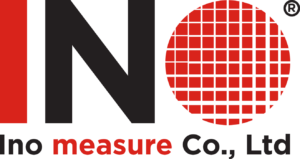The GX5050 is a high speed Dynamic Digital I/O card that provides a full set of features that is comparable to high speed I/O products found in large functional test systems. The card shares an identical architecture with the GC5050,but the GX5050 is a PXI card (6U) and the GC5050 is a PCI card. Both have the ability to operate independently of the host computer when in RUN mode.
The GX5050 provides real-time digital stimulus and capture with 32 pins per card. Up to 16 cards can be daisy-chained for a total of up to 512 pins. The 32 pins can be configured as input or output groups of eight. The direction of each group can be changed dynamically with the sequencer, externally, or via both methods. There is also a 16-bit external bus for triggering and synchronization with external events.
Clock and strobe signals are distributed to the cards via a daisy-chained ribbon cable. These signals can be generated internally or externally. The external control signals allow full synchronization with the unit under test (UUT) and minimize the initialization part of the test.
An innovative, state-of-the-art algorithmic sequencer allows users to create loops and branches to manipulate the output vectors. All of the sequencer commands can be conditioned using the External Event bus and may be programmed using the Graphical Vector Editor using Windows® API command or via a script language. This gives the GX5050 the capability to generate test vectors indefinitely at maximum test rates. Internal and external trigger and pause commands are available in several modes.
The on-board memory is configurable for 3 MB or 12 MB and is user upgradeable. Separate memories are provided for output data, response data, and test step sequencing commands. The separate memory for response data lets the application read the activity on the UUT pins independent of the bi-directional mode. This is an important feature lacking in most high speed digital I/O instruments.
The board is supplied with GTDIO/DIOEasy, a software package that includes vector editing, a virtual instrument panel, and 32/64-bit DLL driver libraries and documentation. The virtual panel can be used to interactively program and control the instrument from a window that displays the instrument’s current settings and status. In addition, interface files are provided to support access to programming tools and languages such as ATEasy, LabView, Microsoft® and Borland® C/C++, Microsoft Visual Basic®, Borland Delphi, and Pascal. On-Line help file and PDF User's Guide provides documentation that includes instructions for installing, using and programming the board.













![[AECO- Fiber Optic Sensors- Cảm biến vị trí sợi quang- Những tính năng ưu việt]](https://www.aoip.com.vn/wp-content/uploads/12-100x70.png)







Comments are closed.